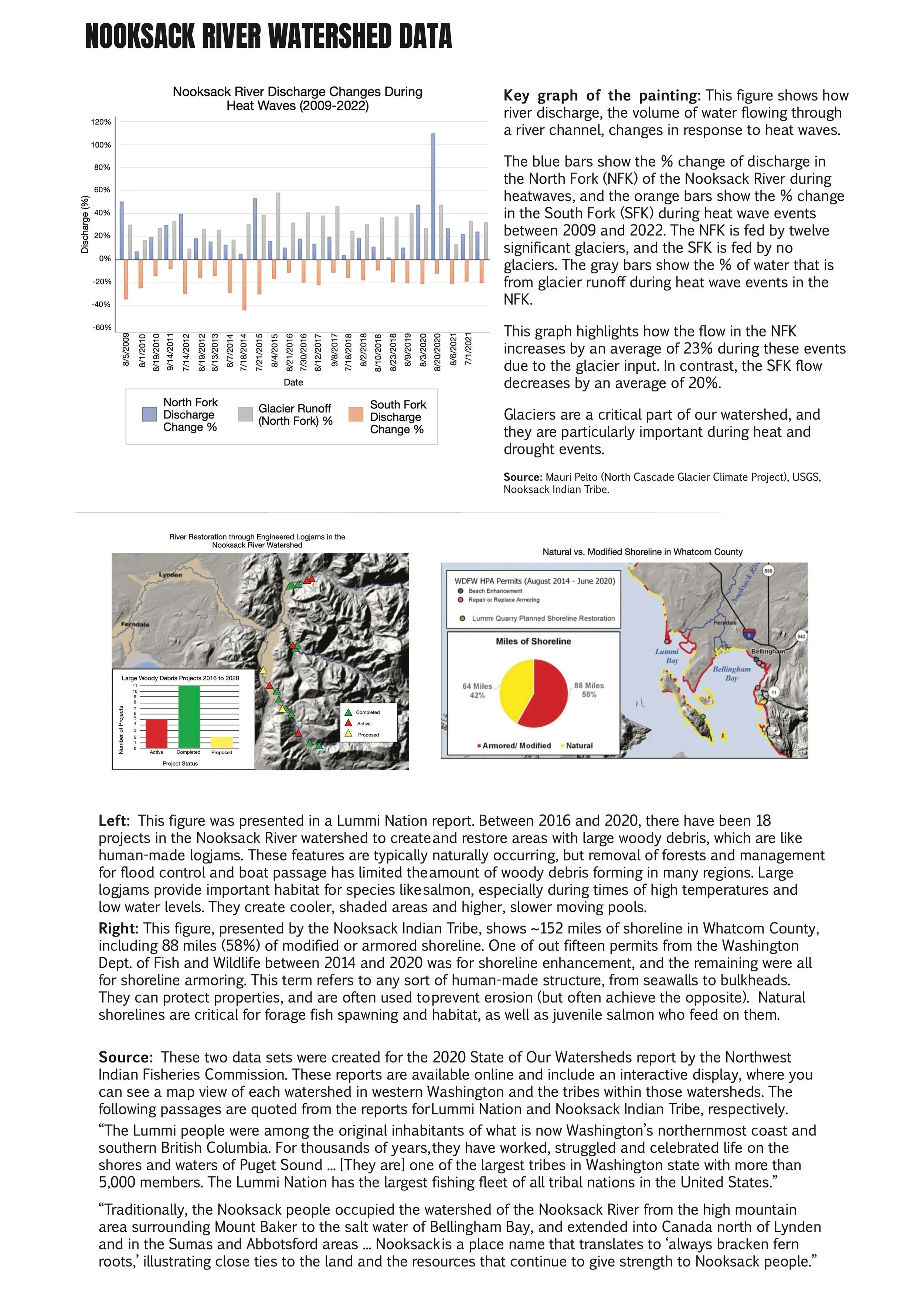Nooksack River Watershed
Watercolor 16” x 26”, 2025
From the Glaciers to the Sea: this is one of two paintings that tells stories of watersheds fed by North Cascade glaciers that flow out into the Puget Sound. The snowpack and glaciers in the mountains in this region provide crucial meltwater to river systems, many of which connect critically to the ocean.
The Nooksack River watershed has a unique story in that it is fed by the South Fork, the Middle Fork, and the North Fork, all flowing together to form one river before it eventually ends in Bellingham Bay. The glaciers and snowpack on Mt. Shuksan, Mt. Baker, and the Twin Sisters are all a part of the story of this region, following the water from the mountains to the sea.
The three forks of the Nooksack River also have a fascinating contrast: the South Fork is fed by no glacier melt, the Middle Fork is fed by four significant glaciers, and the North Fork is fed by 12 significant glaciers. The presence of glaciers and the melt they supply is extremely important, the the contrast between the three forks highlights the importance of this input.
The large bar graph in this piece highlights that story, showing the change in river discharge (the volume of water) during the heat wave events. The North Fork discharge increase by a average of 23% due to the high contribution of glacial runoff that can supplement it, while the unglaciated South Fork discharge decreases by an average of 20%. This comparison makes it clear how important glacier are to watershed they are in. In Whatcom County, the river plays a vital role for the ecosystems and the community. For farms, for salmon, for drinking water: we need glaciers.
To learn about all the other data included, check out the graphic I made below!
Sources: North Cascade Glacier Climate Project (Dr. Mauri Pelto and Jill Pelto), Northwest Indian Fisheries Commission: Nooksack Indian Tribe, Lummi Nation, USGS

